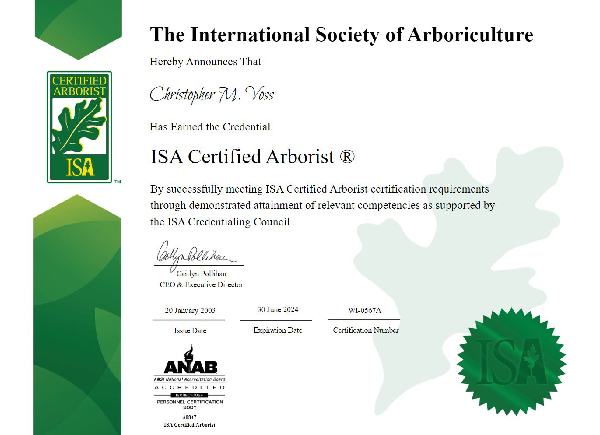Identifying and Treating Insect Infestations in Trees
Prevent, Save, or Remove
Different insect infestations can damage trees in different ways. There are bark or trunk-invading insects such as borers and there are leaf-feeding insects such as the Japanese Beetle. Some damage can happen in a short amount of time & may be irreversible if not dealt with quickly. If you discover damage, it is crucial to have an ISA-certified arborist identify the type of insect infestation, assess the damage, and determine the best course of action.
The question is, was this infestation caught early enough or is it too late to save the tree, and tree removal is necessary?
Preventative Options
Trees flourish when monitored and properly maintained. Tree inspections for insects, diseases, and weak or damaged limbs should be conducted regularly.
We offer trunk and soil injections, as well as pesticide applications such as fungicides and insecticides. So, whether you want to try to prevent insect infestations and diseases, or want to save a tree already infected, call us so we can have one of our tree health experts diagnose your trees and start treatment, hopefully before it is too late.
Common Types of Insect Infestations and Damage
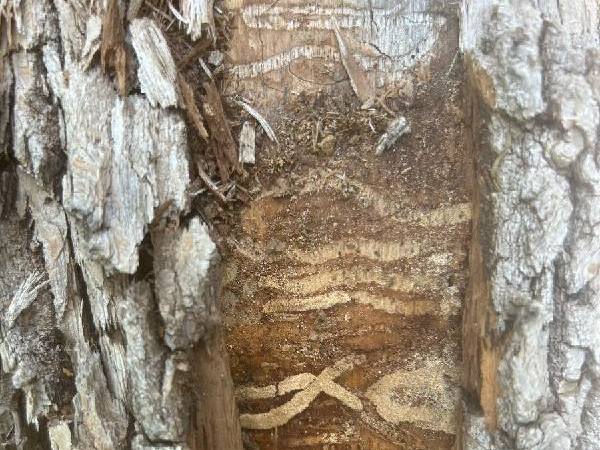
Emerald Ash Borer (EAB)
The Emerald Ash Borer is a destructive insect that targets ash trees. Originating from Asia, this invasive pest has caused significant damage to ash tree populations across Wisconsin. The EAB larvae tunnel under the bark, disrupting the tree’s ability to transport water and nutrients, eventually leading to the tree’s decline.
Signs of EAB infestation include thinning foliage, D-shaped exit holes on the bark, and the presence of serpentine galleries under the bark.
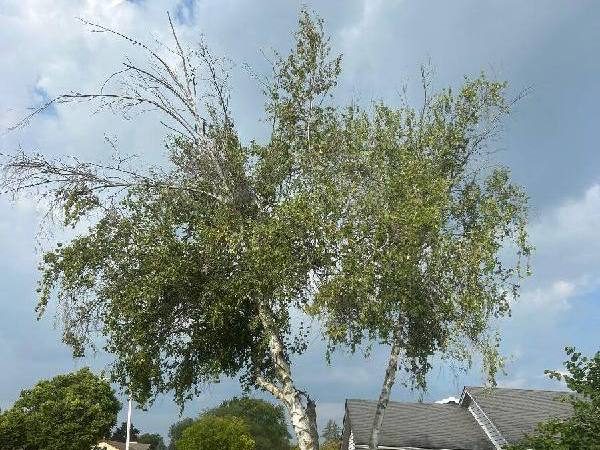
Bronze Birch Borer (BBB)
The Bronze Birch Borer is a destructive pest that attacks various species of birch trees in Wisconsin. The larvae of this beetle bore into the wood, disrupting the tree’s vascular system and leading to branch dieback. Timely intervention is crucial to protect birch trees from further damage.
Signs of BBB infestation include D-shaped exit holes, yellowing or browning foliage, and the presence of woodpecker activity.
IPS Beetle
IPS beetles are attracted to weakened or stressed white pine trees. Factors such as drought, disease, and overcrowding can make these trees vulnerable. The beetles burrow into the tree’s inner bark to create tunnels, where they lay their eggs. As their larvae hatch and feed on the inner tissues, they disrupt the tree’s nutrient and water transport systems, causing damage and eventual tree death if left untreated.
Insecticides are applied to the tree’s bark or injected directly into the trunk. This treatment targets both adult beetles and their larvae within the tree.
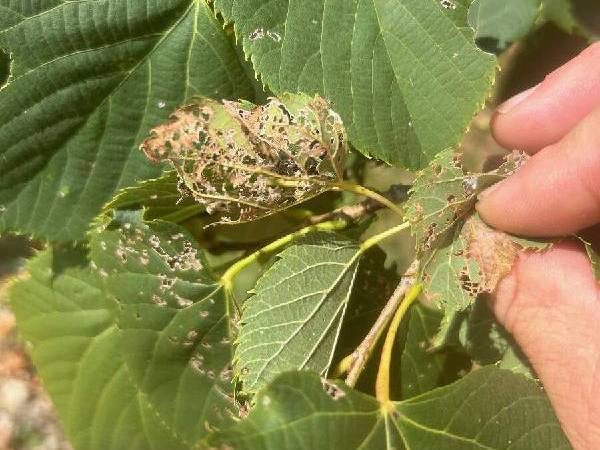
Japanese Beetle
The Japanese Beetle is another common insect pest in Wisconsin. These Beetles can defoliate entire trees, causing severe stress and weakening their overall health. Taking timely action to control Japanese Beetle populations is crucial to prevent further damage. Japanese Beetle infestations often result in reduced foliage.
Through preventative measures, Japanese Beetle populations can be effectively reduced or eliminated, leaving your trees protected from these damages. It is important to talk with professional arborists about options for effective treatment plans.
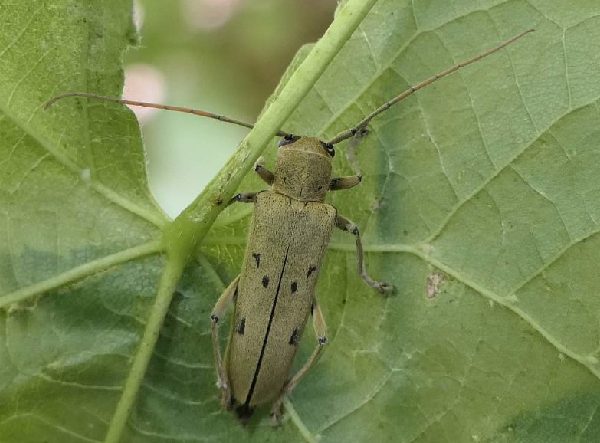
Linden Borer
Linden Borer Beetles are small but mighty insects that target Basswood, Linden, Poplar Trees. These beetles bore through the bark and lay their eggs. It is the larval stage when these beetles do most of their damage. The feeding larva disrupts the flow of nutrients and water, causing the foliage and branches to die back. The first signs of a Linden Borer infestation may include loose and bulging bark where the larva are feeding. Early detection and appropriate management strategies are essential to protect your trees from extensive damage.
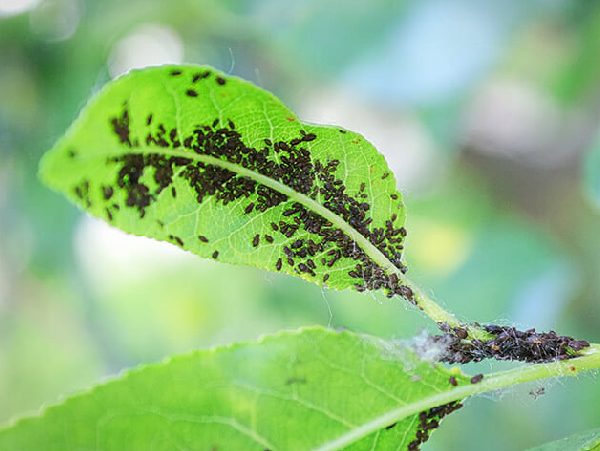
Aphids
Aphids are a common nuisance in Wisconsin. These insects feed on tree foliage, causing defoliation. Taking proactive measures to control their population can help minimize the impact on your trees.
The presence of Aphids cause holes in the leaves of your trees as they feed on the foliage. This limits your trees ability to generate photo-synthesis, which is necessary for the health of your trees and the overall health of the environment.
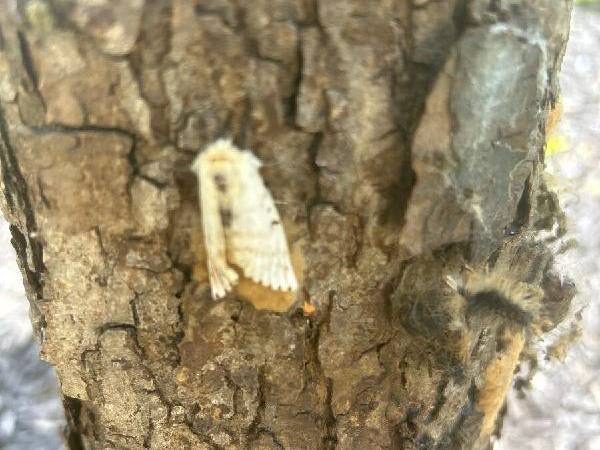
Gypsy (Spongy) Moth
Gypsy Moths infest and damage Oak trees primarily during their caterpillar stage. These caterpillars have voracious appetites and prefer feasting on Oak leaves. This constant munching can severely stress and weaken Oak trees, making them more susceptible to other diseases and pests.
Horticultural oil is a natural and eco-friendly solution. when applied to the trunks and branches of your Oak trees, it creates a barrier that suffocates the Gypsy Moth eggs, preventing them from hatching. Insecticides disrupt the life cycle of Gypsy Moths by killing them in various stages – from egg to caterpillar to adult.

Scale Insects
Scale insects are tiny, sap-feeding insects that can wreak havoc on your Magnolia trees. They attach themselves to the branches and leaves, appearing as small, raised bumps.
As they feed on sap, they reduce the tree’s ability to transport nutrients, leading to weakened growth and overall decline. They also excrete a sugary substance called honeydew, which can attract harmful fungi.
Horticultural oil is used to smother the insects, disrupting their life cycle, and preventing them from feeding on your trees. Insecticides can be applied to eliminate existing infestations and deter future ones.
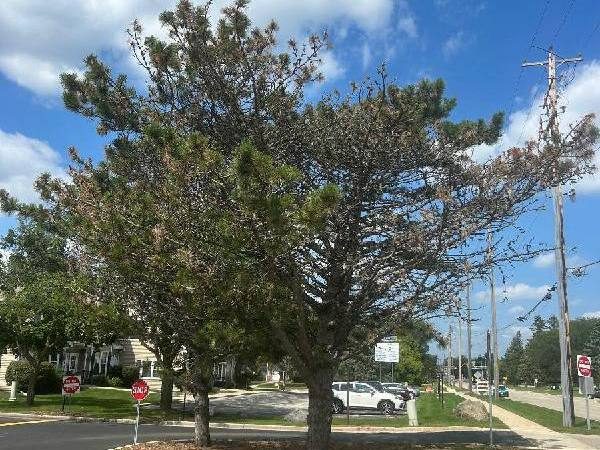
Zimmerman Pine Moth
The Zimmerman Pine Moth is a notorious pest in Wisconsin. These small moths lay their eggs in the bark crevices of Austrian pine trees, typically during the warmer months. The larvae hatch and tunnel beneath the bark, causing significant damage.
Austrian pine trees are particularly vulnerable to Zimmerman Pine Moths due to their attractive resin content. The moth larvae feed on the tree’s inner bark, disrupting nutrient flow and making it vulnerable to the fungal infection, Diplodia Tip Blight.
Treating with specialized fungicides reduces its ability to spread within the tree. Insecticides are applied to target the moths and disrupt their lifecycle, reducing the chances of reinfestation.
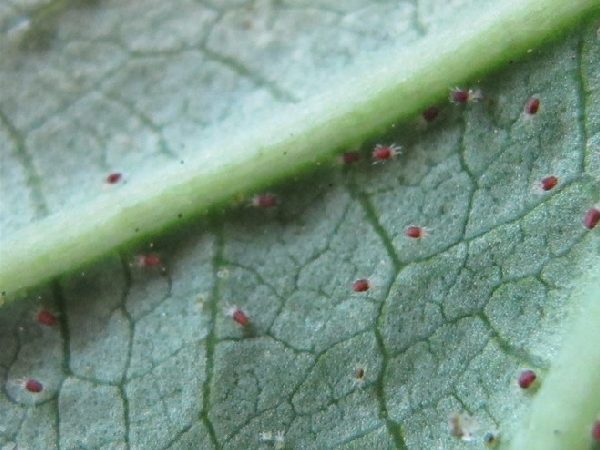
Mites
Mites are a destructive pest that attacks various species of trees in Wisconsin. They infest and destroy foliage, bark, and the core of trees. Timely intervention is crucial to protect your trees from further damage.
Signs of a mite infestation can include spotted leaves, yellowing or browning foliage, and spotted bark.
Preventing Tree Insect Infestations on Your Property in Wisconsin
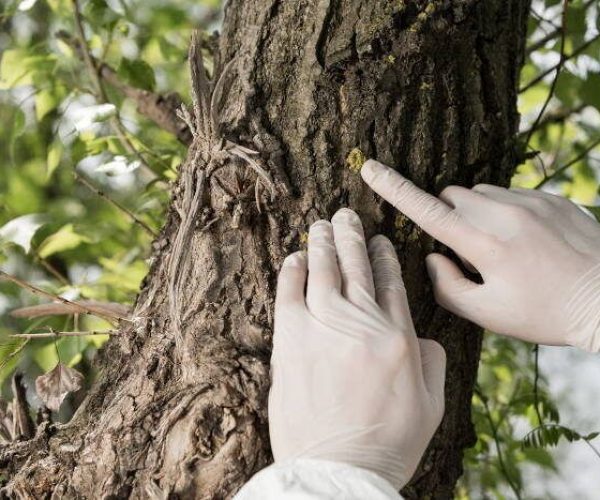
Regular Tree Inspections
Regular tree inspections play a crucial role in identifyingearly signs of insectinfestations. We recommend conducting thorough inspections of your trees at least once a year, preferably in the spring or fall. Look for any visible signs of damage, such as holes in the trunk, chewed leaves, or the presence of larvae. If you notice any suspicious signs, it’sbest to consult a professional arborist who can assess the situation and provide appropriate treatmentoptions.
You can also schedule to have on of our ISA-certified experts do an inspection for you and diagnose any findings on the spot, giving you the best chance of catching problems early as well as coming up with a preventative gameplan base on your trees.
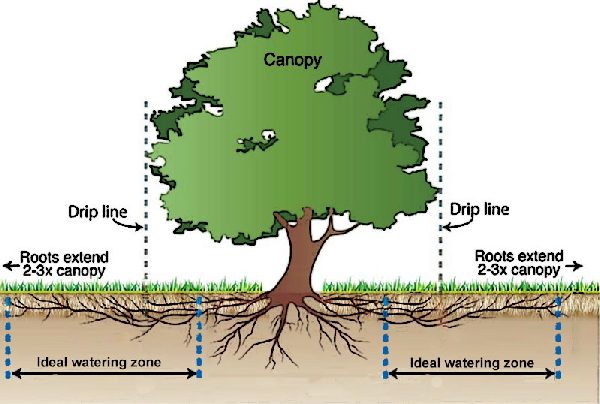
MaintainTree Health
Keeping your trees healthy is key to preventing insectinfestations. Strong and healthy trees have a better defense against pests. Ensure your trees receive adequate water, nutrition, and pruning. Pruning helps remove dead or diseased branches that may attract insects. Additionally, avoid excessive mulching around the base of the trees, as it can create a favorable environment for pests.
Be sure to have a professional tree expert handle your tree pruning needs. A trained & certified expert with years of experience is more likely to find troubled limbs, essentially removing unnecessary risk of infestation or disease.
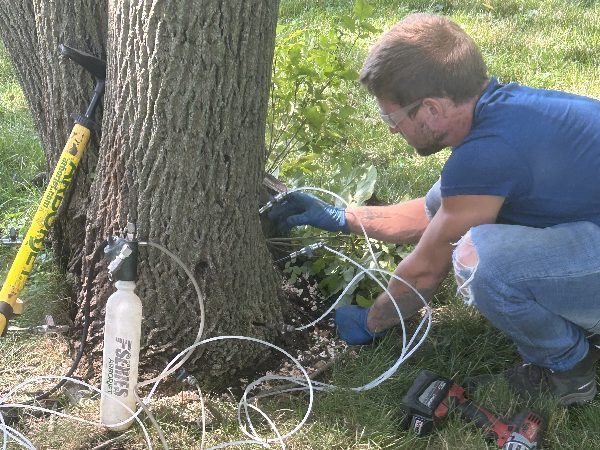
Insect Control Treatments
In certain cases, preventive pest control treatments may be necessary to safeguard your trees. There are also treatments that promote tree health. Organic or chemical treatments can help improve tree health and control or prevent insectinfestations.
We strongly recommend consulting with an experienced tree care expert to handle applying any treatments. They will assess the health of your tree, the risk of infestation and recommend the most effective and environmentally friendly options available.

Early Intervention
If you spot any signs of tree insect infestations on your property, it’s crucial to act promptly. Contact a reputable tree care service like ours, specializing in insect control, for a thorough assessment and appropriate treatment. Early intervention can prevent further damage and help preserve the health and beauty of your trees.
Don’t let insect infestations compromise the well-being of your trees. By following these preventive measures and working with us, you can keep your trees safe, healthy, and thriving on your property. Contact us today for expert advice and assistance in preventing tree insect infestations.
Arborist & Author: CHRIS VOSS
As the owner of this award-winning tree service company, Chris Voss has a wealth of knowledge and extensive experience in the tree service industry dating back to 1999. Chris is an ISA Certified Arborist, ISA #WI-0567A, which certifies he has a professional level of knowledge and skill in the field of arboriculture.
Chris is also licensed and certified for the application of pesticides including fungicides and insecticides by the State of Wisconsin Department of Agriculture, Trade and Consumer Protection.
